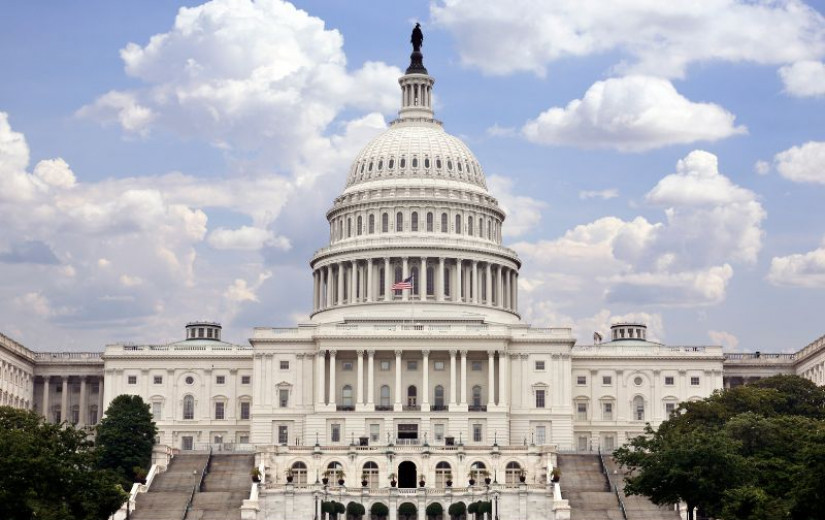

ASLA’s Professional Practice Networks (PPNs) organized an autumn abundance of events during the ASLA 2025 Conference on Landscape Architecture last weekend, featuring formats from lightning presentations to breakout groups and lively small-group conversations. We would like to thank everyone who took part, and an especially big thank you to all the PPN leaders who served as meeting planners, speakers, and facilitators. Thank you!
The PPN meetings were opportunities to connect and network, allowing for peer-to-peer learning and knowledge-sharing. If you weren’t able to make it to the conference this year, we hope the photos below provide a glimpse of the PPNs in action. For those interested in watching recordings of education sessions that took place in New Orleans, 50+ sessions will be available on-demand via ASLA Online Learning in the coming weeks.
Campus Planning & Design PPN Meeting
Campus Planning & Design PPN leaders Joseph Favour, ASLA, and Tony Catchot, ASLA, PLA, invited two landscape architects based in the greater New Orleans region to present on the trends and challenges of campus-focused practice in NOLA and neighboring states.

Zach Broussard, ASLA, PLA, Partner, CARBO Landscape Architecture in Baton Rouge, showed some recent planning and design work at Louisiana State University to frame emerging trends and challenges shaping their campus work.

Cory Gallo, FASLA, PLA, Professor, Assistant Dean, and Assistant Director, Mississippi Agricultural and Forestry Experiment Station at Mississippi State University in Starkville, MS, described current challenges facing universities and how they impact campus planning, design, construction, and the identity of campuses.
Children’s Outdoor Environments PPN Meeting

The Children’s Outdoor Environments PPN hosted a discussion on overcoming challenges when building lively outdoor play environments. PPN leaders Sarah Williams, PLA, ASLA, CPSI, and Chad Kennedy, FASLA, PLA, LEED AP, discussed their partnerships, challenges, and skills learned in designing great outdoor play environments.

Community Design PPN Meeting
Community Design PPN leaders Robert L. Ryan, FASLA (University of Massachusetts), Hongbing Tang, ASLA (University of Rhode Island), and Stacey Weaks, ASLA, PLA (Norris Design), along with presenters Brett Weidl, ASLA (MKSK), and Zhenyu Yuan (Sketch Action), explored innovative approaches to public participation from both professional and academic perspectives.

Engaging local communities in the design process is vital, and the session highlighted case studies from the U.S. and China, offering cross-cultural insights into community engagement. The SEE (Supportive Environments for Effectiveness) framework was introduced, along with a web-based toolkit for reimagining public participation.


Attendees also had a chance to explore new techniques integrating environmental psychology principles for community engagement throughout the design process in an interactive activity led by the project team.
Design-Build and Residential Landscape Architecture PPNs Meeting

The Design-Build and Residential Landscape Architecture PPNs gathered for an informal, interactive session. This open forum invited attendees to share where their professional needs aren’t being met, what resources or learning opportunities they’d like to see, and how ASLA can better support their growth. Open to all levels of experience, from beginners to experienced professionals, participants’ conversation sparked new connections and ideas for the future of design education and practice in residential and design-build landscape architecture.
Digital Technology PPN Meeting

How is technology reshaping the way landscape architects design, collaborate, and communicate? PPN leader Eric Gilbey, ASLA, discussed the digital tools and workflows driving the future of the profession—from AI and AR to BIM, GIS, and beyond. Participants had the chance to swap tips, share real-world use cases, and explore what’s next in the ever-evolving tech landscape of landscape architecture.
Ecology & Restoration PPN Meeting

The Ecology & Restoration PPN meeting featured an energizing conversation about the future of ecological design and restoration in landscape architecture. This session offered a chance to connect, share ideas, and explore emerging trends and challenges shaping this vital area of practice through peer-to-peer dialogue.
Education & Practice PPN Meeting

The Education & Practice PPN organized a panel discussion on transitioning from practice to academia. Transitioning from a career in professional practice to academia, whether part-time or full-time, presents both distinct challenges and invaluable opportunities. The panelists shared how experienced practitioners can leverage their practical expertise to enhance academic instruction, enrich the student learning experience, and better prepare students for the demands of professional careers. Key strategies for navigating the academic environment were discussed, along with insights on fostering a dynamic classroom atmosphere that mirrors real-world conditions.
Environmental Justice PPN Meeting

This summer, the Climate Agency & Community Resilience subcommittee of ASLA’s Climate & Biodiversity Action Committee released an article and resource: Climate Justice 101: How to Prioritize Justice and Community. Environmental Justice PPN Leader Chingwen Cheng, PhD, ASLA, PLA, LEED AP, was on the team that developed this article, and she talked about this new resource at the Environmental Justice PPN meeting. Climate Justice 101 defines climate justice and offers some questions to ask and strategies to apply in advancing climate justice through landscape architecture projects, making these complex ideas accessible to broad audiences.
Healthcare & Therapeutic Design PPN Meeting
Healthcare & Therapeutic Design PPN leader Jason Beury, ASLA, PLA, facilitated a conversation on how to leverage members’ perspectives to address diverse operational needs of healthcare campuses within the frameworks of healthy and resilient communities, neighborhood integration, and placemaking. Participants also explored how small wins and lessons learned in healthcare and therapeutic landscape design can inform other professional practice areas.
Historic Preservation PPN Events
The Historic American Landscapes Survey (HALS) Challenge

Allison A. Crosbie, ASLA, co-chair of ASLA’s Historic American Landscapes Survey (HALS) Subcommittee, announced the winners of the 2025 HALS Challenge, Landscapes of Roadside America, during an event in the EXPO’s ASLA Pavilion. The annual HALS Challenge encourages landscape architects, students, and other interested parties to document historic landscapes in their communities. To enter, participants must complete a historical report that highlights the history, significance, and character-defining features of the surveyed landscape. Stay tuned—an upcoming post on The Field will showcase all the winners.

2025 also marks 25 years since the National Park Service, with program partners ASLA and the Library of Congress, established HALS to document historic landscapes in the United States and its territories to serve as tangible evidence of our nation’s heritage and development.
Visual / Scenic Stewardship PPN Working Group Meeting

The Visual / Scenic Stewardship PPN Working Group discussed how they are establishing a hub for professionals and academics engaged or interested in the planning, protection, enhancement, and management of the visual landscape at all scales. Working group leaders Steve Thompson, ASLA, PLA, Angela D. Dye, FASLA, and Jessica Kimball, ASLA, PLA, talked about the various goals and initiatives this new and evolving group hopes to accomplish.

For the group’s mission statement, please see the Historic Preservation PPN’s webpage.
International Practice PPN Meeting

The International Practice PPN showcased the diversity and variety of the kinds of work landscape architects are doing internationally—range of the scale, complexity, settings—via two engaging presentations from PPN members:
Urban Agri-Parks: Guiding Cities and Territories Toward Food Security
Lessons from the Islands: Singapore and Puerto Rico
Ming-Jen Hsueh, ASLA, PLA
Island cities like Singapore and Puerto Rico underscore the urgency and potential of food sovereignty in land-constrained, import-dependent contexts. Singapore’s “30 by 30” initiative, which aims to locally produce 30% of the nation’s nutritional needs by 2030, reframes agriculture as a high-tech, knowledge-driven sector. In Puerto Rico, efforts to strengthen regional agriculture following Hurricane Maria have catalyzed a broader conversation around food justice, self-reliance, and regenerative land use.

Designing Beyond Extraction: Reimagining Forestry Futures in Uruguay
Amanda Coen, ASLA, PLA
Extractivism, in its plurality of forms, is a prompt to examine nature-culture relations, colonial legacies, and shifting territorial identities that span a range of geographies, histories, and cultures. In Uruguay, forest plantations—backed by the 1987 Ley Forestal and transnational capital—have emerged as a quiet yet powerful force, transforming ecosystems and reframing landscapes as sites of production. With over half of zoned forestry land still untouched, the country stands at a critical juncture to imagine regenerative, pluriversal landscapes that challenge colonial land configurations, expand definitions of productivity, and accommodate local, more-than-human needs.
Parks & Recreation PPN Meeting

Parks & Recreation PPN leaders Bronwen Mastro, ASLA, LEED BD+C, Dennis E. Bryers, FASLA, CLARB, PLA, Tod E. Hueser, ASLA, Bert Lynn, ASLA, PLA, LEED AP, Matt Boehner, ASLA, Cristobal Betancourt, ASLA, PLA, AICP, and Lauren E. Schmitt, ASLA, AICP, guided this conversation-focused opportunity to meet and network, allowing for peer-to-peer learning and knowledge-sharing through a facilitated discussion focused on the public sector. Attendees were encouraged to share ideas and best practices from their agencies and the top issues they’re encountering working in parks and recreation.
Planting Design PPN Meeting

PPN leader Jane Beggs-Joles, Corporate ASLA, invited Planting Design PPN members to take part in a Plant Chat—all were welcome to share their suggestions for good “solution plants” and describe how and why they used them on a project.
Sustainable Design & Development PPN Meeting

Sustainable Design & Development PPN leader Michael Ledbetter, ASLA, PLA, invited two speakers to share their thoughts on “SITES All the Time? Incorporating SITES in Everyday Practice.” Nancy Monteith, ASLA, PLA, SITES AP, is a Senior Landscape Architect for the City of Salt Lake City and presented on the City’s Sustainable Infrastructure Policy to require SITES certification for projects exceeding $2M in construction budget. Evan Mather, FASLA, PLA, SITES AP, Principal at MIG in Los Angeles, talked about his firm’s adoption of a SITES approach to all their work, regardless of whether the client is looking to pursue SITES certification. Participants learned about the benefits the SITES framework provides for clients and public sector work, with the goal and everyone leaving the meeting inspired to make your practice as sustainable as possible and to consider making SITES part of your everyday.
SITES resources:
- SITES Rating System flyer
- SITES AP Credential flyer
- SITES Resources from GBCI
- SITES Client Deck
- Why SITES?
- The Power of Measurable Outcomes in Proving Economic Value: A Collection of Resources & Tools
Urban Design and Transportation PPNs Meeting

The Urban Design and Transportation PPNs co-hosted a two-part session on Placemaking, Mobility, and Urban Design. PPN leaders kicked things off with a series of short presentations on how sense of place weaves through transportation, tourism, safety, historic context, and the city fabric.










